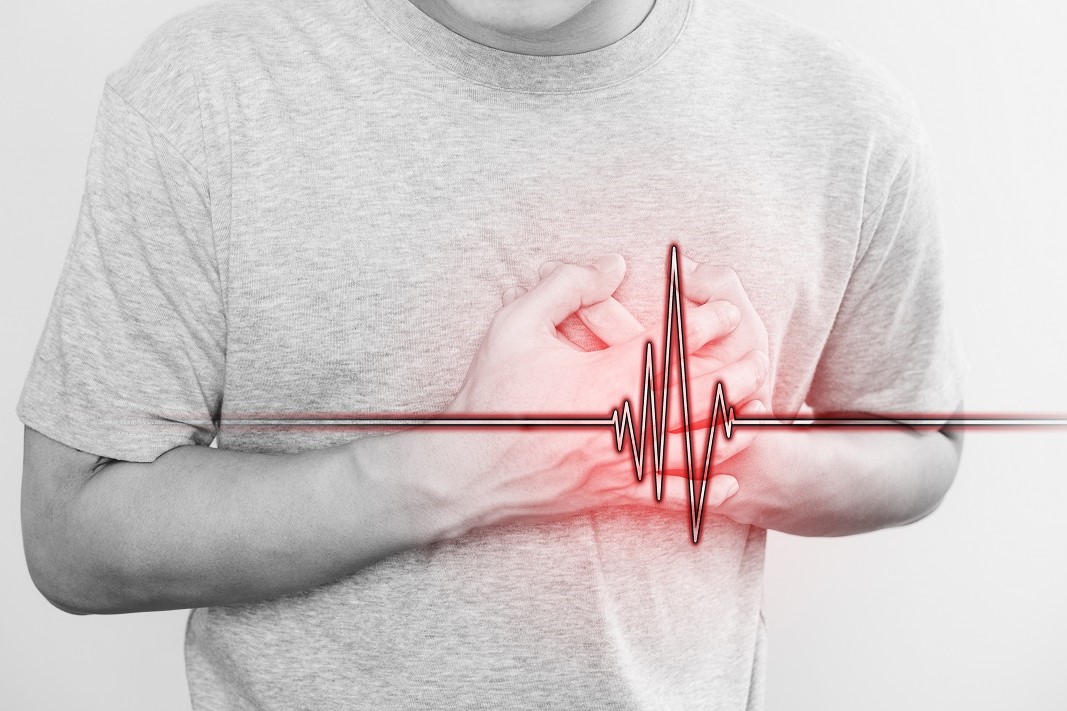
Angina pectoris: symptoms and causes
What is angina pectoris? The term angina denotes a manifestation of Myocardial Ischemia of which it is a member, predominantly a consequence of atherosclerosis, characterized by the formation of atheromatous plaques that result in narrowing (stenosis) of varying degrees along the arteries
This results in reduced blood, and therefore oxygen, and nutrient supply to the areas irrigated by the diseased branch.
Signs and symptoms of angina pectoris
Angina pectoris represents the most frequent symptom of coronary atherosclerosis and is manifested by intense, transient pain with regression at rest, lasting from 5 to 15 minutes, located in the center of the chest, often radiating down the left arm but also to the right or both arms.
Less frequently, it may radiate to the neck, jaw, epigastric region, and scapulae.
Those affected describe the pain as a sense of constriction, weight, compression, less frequently burning.
In most patients, angina occurs sporadically, usually related to exertion, and is therefore termed stable angina pectoris.
A second form of angina, termed unstable angina, straddles the line between stable angina and true infarction and includes various clinical pictures:
- new-onset angina (within the last two months), in which there are episodes of pain, from mild physical exertion and/or normal daily tasks, that are more protracted than in stable angina;
- aggravating angina (within the last two months), in which there is aggravation of a preexisting stable angina with the occurrence of more intense, lower threshold and/or resting episodes of pain, protracted in time and more frequent;
- early post-infarct angina, if it occurs less than 30 days after acute myocardial infarction, usually within 2 weeks, with sudden increase in severity of pre-existing stenosis. It indicates coronary artery disease in still active phase, characterized by high incidence of reinfarction and high mortality.
Angina pectoris, while less severe than infarction, is characterized by the unpredictability and instability of the clinical picture, hence the term ‘unstable’
It is, in fact, an expression of an unstable state of the disease that, in the absence of appropriate therapies to be carried out in the hospital, can lead to the onset of infarction.
To date, it is one of the major causes of mortality in Western countries.
Causes of angina pectoris
Unlike infarction, in angina pectoris there is temporary myocardial ischemia (decreased nutritional supply to the myocardium) due to temporary narrowing of a coronary artery, resulting from spasm and/or an initial, reversible thrombotic process.
Infarction, on the other hand, occurs when the occlusion lasts for more than 30 minutes, resulting in the death of some cardiac cells
Coronary syndromes can, moreover, have a variable prognosis: in other words, some patients have a low probability of events such as infarction, persistent angina, and death (1-2% in the three months after the onset of symptoms).
Other patients have a 20-30% risk of events; and it is in these cases that treatment is most effective.
Consequently, it is very important at an early stage to identify individuals with severe angina and with extracardiac disease and associated cardiovascular risk factors.
Read Also:
Emergency Live Even More…Live: Download The New Free App Of Your Newspaper For IOS And Android
Angina Pectoris: What It Is And How To Treat It
Do You Have Heart Palpitations? Here Is What They Are And What They Indicate
Inflammations Of The Heart: Myocarditis, Infective Endocarditis And Pericarditis
MRI, Magnetic Resonance Imaging Of The Heart: What Is It And Why Is It Important?
Angina Pectoris: Recognition, Diagnosis And Treatment
Arrhythmias: The Alterations Of The Heart
Tachycardia: Is There A Risk Of Arrhythmia? What Differences Exist Between The Two?
Pathologies Of The Left Ventricle: Dilated Cardiomyopathy
Arrhythmogenic Cardiomyopathy: What It Is And What It Entails
Atrial Fibrillation: Symptoms To Watch Out For
Wolff-Parkinson-White Syndrome: What It Is And How To Treat It
Do You Have Episodes Of Sudden Tachycardia? You May Suffer From Wolff-Parkinson-White Syndrome (WPW)
Transient Tachypnoea Of The Newborn: Overview Of Neonatal Wet Lung Syndrome
Myocardial Infarction: Causes, Symptoms And Risk Factors
Dilated Cardiomyopathy: What It Is, What Causes It And How It Is Treated
Heart Disease: What Is Cardiomyopathy?
Inflammations Of The Heart: Myocarditis, Infective Endocarditis And Pericarditis
Heart Murmurs: What It Is And When To Be Concerned
Broken Heart Syndrome Is On The Rise: We Know Takotsubo Cardiomyopathy
Cardiomyopathies: What They Are And What Are The Treatments
Alcoholic And Arrhythmogenic Right Ventricular Cardiomyopathy
Difference Between Spontaneous, Electrical And Pharmacological Cardioversion
Heart Failure: Symptoms And Possible Treatments
What Is Heart Failure And How Can It Be Recognised?
Heart: What Is A Heart Attack And How Do We Intervene?
Heart Attack Symptoms: What To Do In An Emergency, The Role Of CPR
Bradyarrhythmias: What They Are, How To Diagnose Them And How To Treat Them
Paediatric Arrhythmias: What They Are, How To Treat Them


